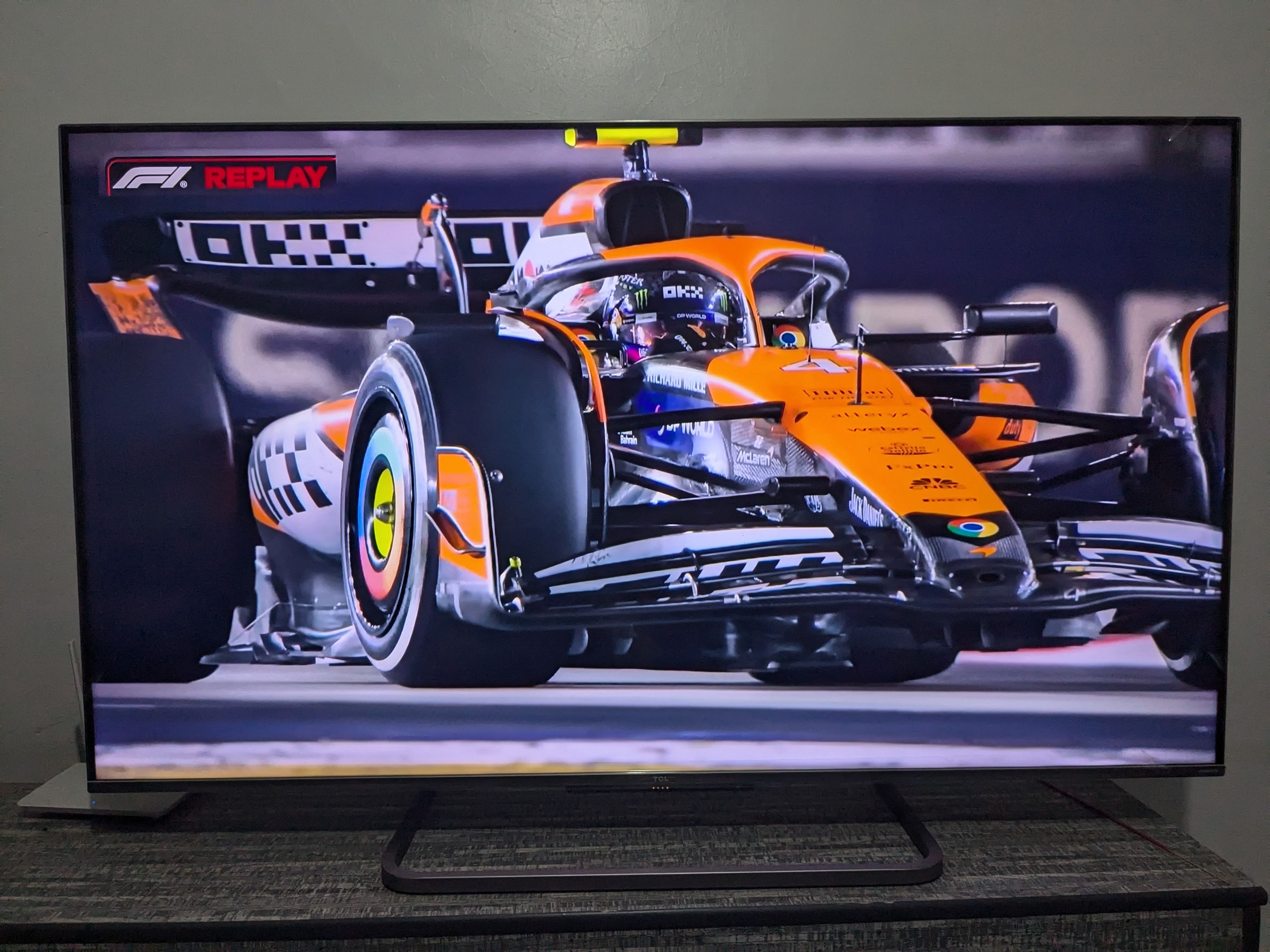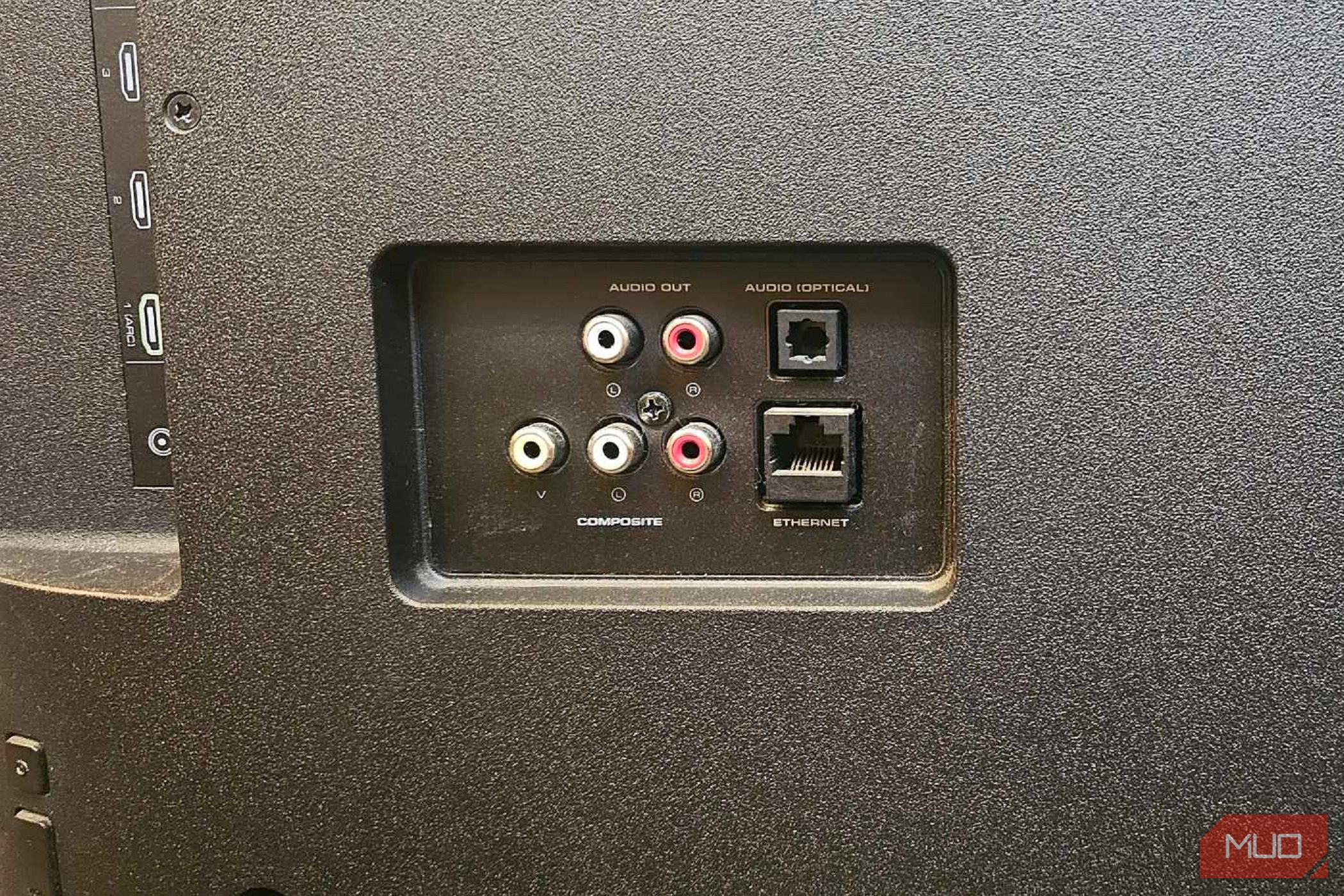I thought streaming over Wi-Fi on my TV was fine, but I decided to try Ethernet since I had a cable lying around. It instantly improved everything, and now I wish I’d made the switch years ago.
4
More Stable Connection
One of the biggest improvements I experienced after switching my smart TV to an Ethernet connection was a significantly more stable connection. My internet speed is fast enough for streaming, but I occasionally experience buffering or dropped streams, especially with high-bandwidth content like 4K and Dolby Vision. It didn’t happen all the time, but it was annoying enough to be noticeable.

Related
My Wi-Fi Drops Every Hour: Here’s What Finally Fixed It
Random Wi-Fi outages absolutely suck—so take some steps to resolve the problem.
Wi-Fi relies on shared frequency bands, which makes it vulnerable to interference from microwaves, Bluetooth-powered devices, and neighboring Wi-Fi networks. Ethernet is better because it uses a direct physical cable connection, which is almost immune to interference, not just from other wireless devices but also from physical obstacles like walls and environmental factors.
Now, if I warm food in the microwave, streaming doesn’t stutter like it used to. The stability convinced me to use Ethernet wherever possible, such as when connecting my work-from-home setup to the internet.
3
Lower Latency
Another benefit I’ve experienced after switching to Ethernet is lower latency. Latency is the time delay between sending and receiving data. It might sound like a technical detail, but latency makes a noticeable difference in everyday use, particularly when watching content. I’m a soccer and Formula 1 fan, and I often watch both live, so low latency is crucial, just as it is for any live-stream content.
While using Wi-Fi, latency can be slightly higher or less consistent, which negatively affects live streams. Sometimes, I’d press play and wait several seconds before the video started playing, or it’d get stuck, so I’d have to reload. And it wasn’t always about my internet connection.
The Wi-Fi protocol has overhead that adds delay to data transmission, such as encryption, authentication, and collision avoidance. Although these may seem small individually, they do add up when combined, thus increasing latency.
However, once I connected my TV directly to the router via an Ethernet cable, streaming became significantly smoother. That lag has nearly disappeared, and videos start playing almost instantly the moment I hit play.
Skipping ahead or rewinding is quicker, and everything generally feels more responsive. The lower latency also makes apps like YouTube feel faster, and browsing is more fluid since I’m not waiting for thumbnails to load or menus to catch up as often as I did while using Wi-Fi.
2
Better Speeds for Streaming
Switching to Ethernet also provided me with faster and more consistent streaming speeds. This doesn’t mean that Wi-Fi can’t deliver high speeds—it can. For instance, Wi-Fi 6 (802.11ax) can achieve maximum data rates of 9.6 Gbps, and newer Wi-Fi standards, such as Wi-Fi 7, can achieve rates that are multiples of this.
However, when compared to Ethernet, Wi-Fi often fails to deliver competitive speeds because it’s affected by various factors, including signal strength, distance from the router, network congestion, physical barriers, and interference from other devices.

Related
Why I Prefer Ethernet Over Wi-Fi for My Streaming Setup
Don’t let Wi-Fi performance affect your live stream.
Switching to Ethernet has significantly improved my overall streaming experience, thanks to consistently high speeds. I now enjoy consistent video quality from start to finish, unlike previously, where I’d sometimes notice fluctuations in quality.
Unless my internet is experiencing issues (which rarely happens), the direct connection provides smoother streaming. Of course, Ethernet has distance limits beyond which the signal starts to deteriorate. Thankfully, my router and TV aren’t far apart, so that isn’t an issue.
If your TV is far from the router, you don’t necessarily need to run a long cable across the house. Powerline adapters or Multimedia over Coax (MoCA) adapters can bring Ethernet-like performance using your home’s electrical or coaxial wiring, making it easy to get the same benefits.
1
No More Password Setups
One minor but surprisingly satisfying perk of switching to Ethernet is that I no longer have to deal with Wi-Fi passwords on my smart TV. Using an on-screen keyboard always makes typing on a TV annoying and error-prone. And if you’re like me, with a good habit of making every password stronger, it’s worse because you constantly have to switch between lowercase, uppercase letters, and special symbols.
With Wi-Fi, every time I changed my password, I had to navigate to the relevant menu, find the network, re-enter the password, and hope I typed it correctly the first time. However, with Ethernet, there’s no setup needed. You plug in the cable, and you’re instantly connected. Even if I change my Wi-Fi password, my wired connection remains unaffected.
Switching from Wi-Fi to Ethernet has been one of the easiest tech upgrades I’ve made, with greater impact than I anticipated. Streaming has become faster and smoother thanks to high speeds, lower latency, and connection stability. It has also solved the headache of changing passwords, and I couldn’t be happier. If you’re experiencing buffering, lag, or dropped connections while watching content, switching to Ethernet might be the fix you didn’t know you needed.









Leave a Comment
Your email address will not be published. Required fields are marked *